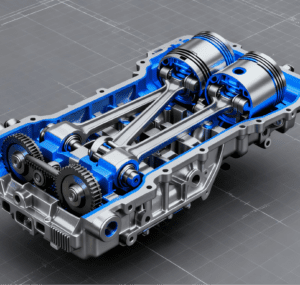
On October 24th, according to reports from overseas automotive media, Omoda & Jaecoo (a European-focused brand under Chery) unveiled an internal combustion engine with an ultra-high thermal efficiency of 48% at the 2025 International User Summit.
Although electrification remains the core direction of Chery Group’s long-term strategy, Omoda & Jaecoo is also investing heavily in the optimization of traditional internal combustion engines. The brand believes that hybrid power will still be the most practical path to reducing global energy consumption in the next few years.
In practical use, every 1 percentage point increase in thermal efficiency can reduce fuel consumption by approximately 2.5%. Compared with the current industry average thermal efficiency of 38% to 45%, the 48% thermal efficiency of this new engine represents a major technological breakthrough.
Beyond improving efficiency, higher thermal performance can also directly reduce carbon dioxide emissions, making it a key factor influencing both economic benefits and environmental protection outcomes.
Chery Group’s R&D team is developing a series of groundbreaking and innovative technologies, including an ultra-high compression ratio of 26:1, a triple-connecting-rod hyperbolic mechanism, a 35% exhaust gas recirculation (EGR) rate, and advanced thermal barrier coatings.
These technologies work in synergy to not only reduce heat loss but also improve combustion cycle efficiency, laying the foundation for a new generation of high-efficiency hybrid engines.

At the summit, Omoda & Jaecoo also highlighted the practical application achievements of its existing Super Hybrid System (SHS). This system combines a 1.5TDGI engine (adopting the Miller cycle) with two electric motors and an intelligent DHT transmission, achieving a thermal efficiency of up to 44.5% and a minimum fuel consumption of only 6 liters per 100 kilometers.
The Super Hybrid System (SHS) can automatically adjust driving modes based on vehicle speed and load conditions, balancing performance and efficiency. It is also equipped with an advanced safety system that can cut off the power supply within 2 milliseconds in the event of a collision.
In addition, the system features an all-electric range of 56 miles (approximately 90 kilometers) and supports Vehicle-to-Load (V2L) functionality, with a maximum power output of 3.3 kilowatts.




















